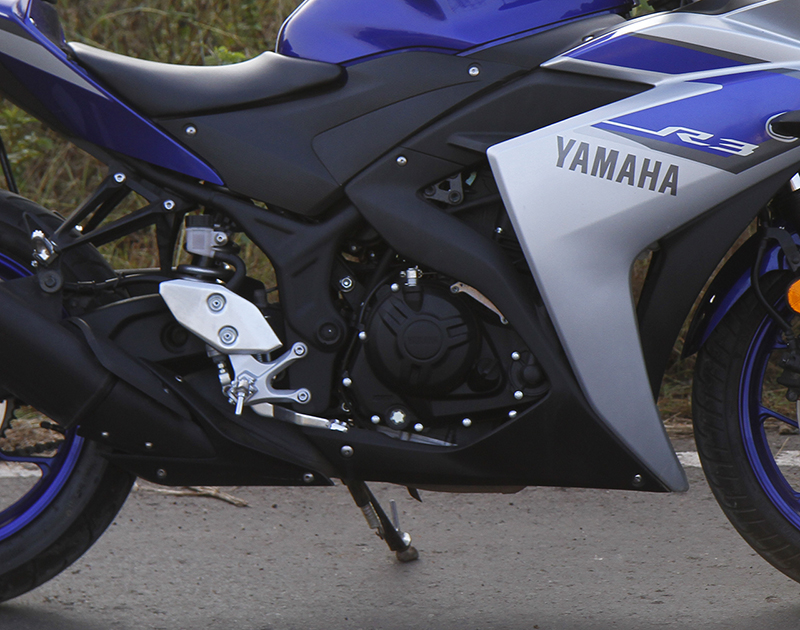Anyway, the design is modern, edgy and sharp. But to make it even sportier Yamaha have done something special. When it comes to performance, especially on a racetrack, it is essential to have compact dimensions. For that Yamaha engineers have slimmed down the R3 to a level where it doesn’t feel like a parallel-twin powered bike. More on this compact engine later. The tubular diamond frame and the brilliant multi-layered fairing, which is aerodynamically designed, come together to make the R3 a very compact package. Being five feet eight, and similarly wide, I was able to rest both my feet firmly on the ground and move the bike around without a problem. The low seat height of 780 mm, slim chassis and tank let shorter riders do the same without losing their composure. In fact, it is so slim and ergonomic that when you sit on the R3, everything just falls in hand. The step-seat, high rear-sets and the slightly raised clip-on bars allow a posture that is utterly comfortable. For shorter riders the seating position is still a bit committed but not too aggressive. It gives a sense of agility and removes the fact from your mind that this is, after all, a parallel-twin powered bike.
Talking of parallel-twin power, the R3 comes with a special twin-cylinder engine that is packed with technology not commonly seen on bikes in India. The all-aluminium, 321-cc, liquid-cooled, four-stroke, four-valve DOHC motor — phew, that’s a lot! — features Diasil coating on the cylinders for efficient operation and quicker heat dissipation. This keeps the temperature down and also slows down oil deterioration. Apart from that, Yamaha engineers have also used forged aluminium pistons, which are connected to short carburised con-rods, instead of cast pistons as forged ones can handle more heat without losing their strength. Another measure that Yamaha have adopted to make the engine more compact and efficient is off-set cylinder configuration, which prevents frictional losses while delivering the power more efficiently. A 180-degree crankshaft with a balancer shaft to minimise the vibrations helps improve the refinement. These measures have made the engine efficient, refined and compact, resulting in a motor that is narrower than conventional parallel-twins, thus making the central segment of the bike slimmer.
Let’s now take a look at the figures. The over-square 321 cc with a bore x stroke of 68.0 mm x 44.1 mm houses 42 horses and 29.6 Newton metres of torque. All of this power is transferred from the crank to the wet clutch via a gear, and then it travels through the slick and utterly smooth six-speed transmission which finally supplies it to the rear wheels via a chain final drive. Sounds like an uncommon description of a gearbox… well, this is how a gearbox works and on the R3 it is utterly smooth and precise in its operation.




Leave a Reply